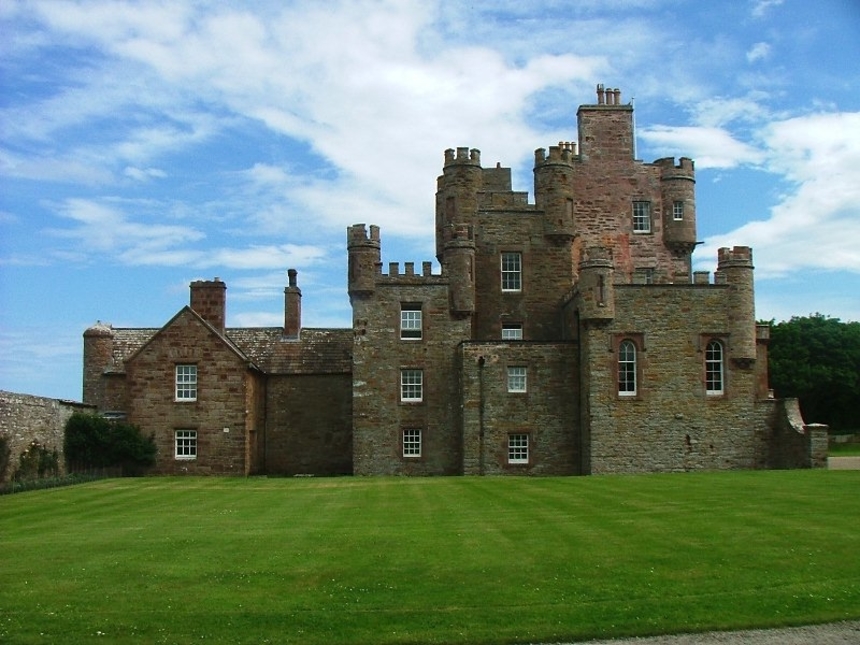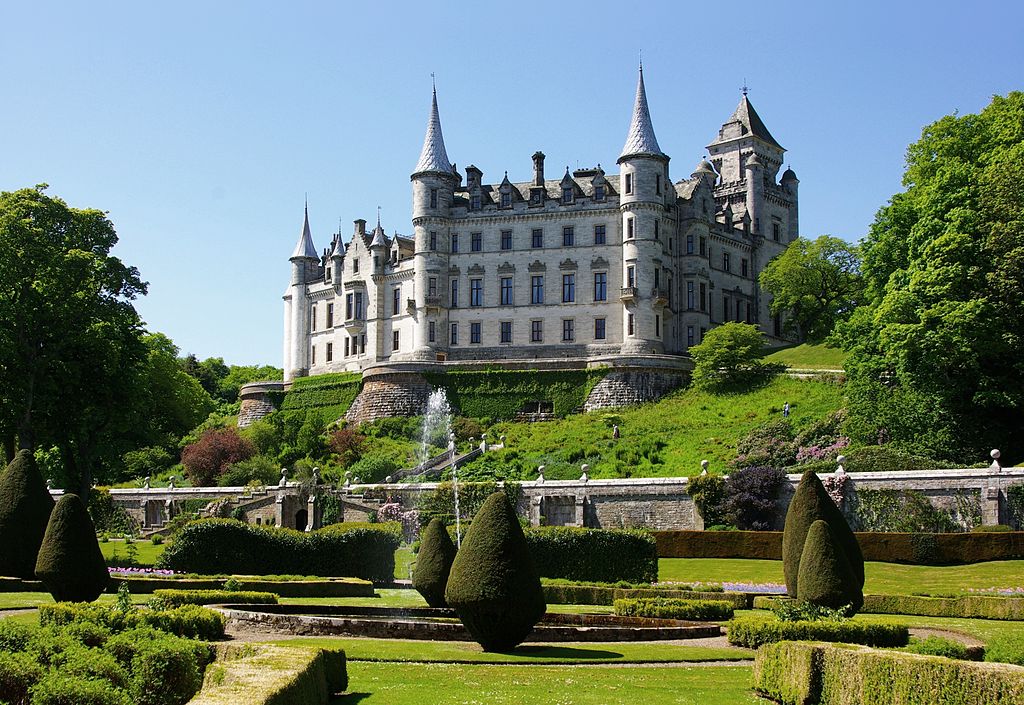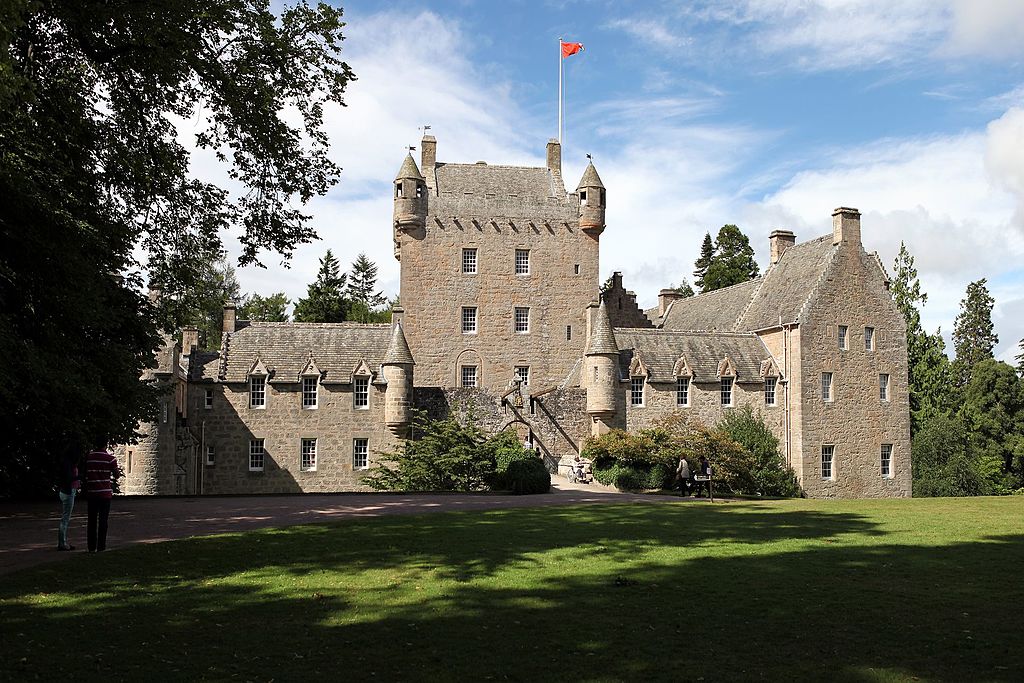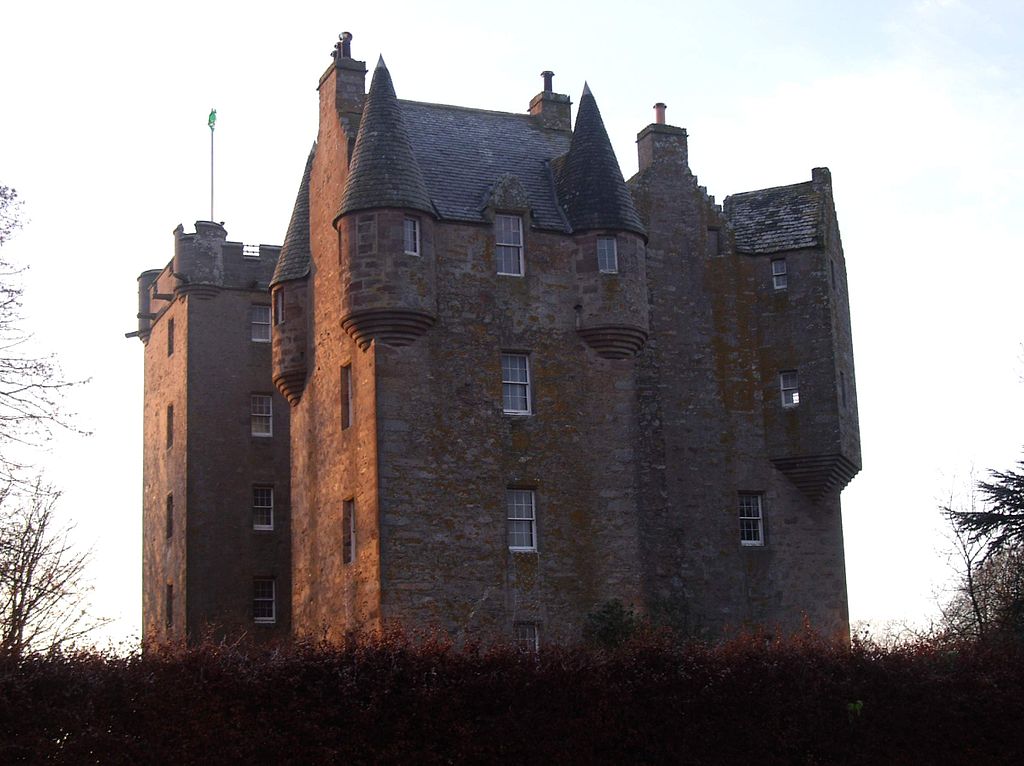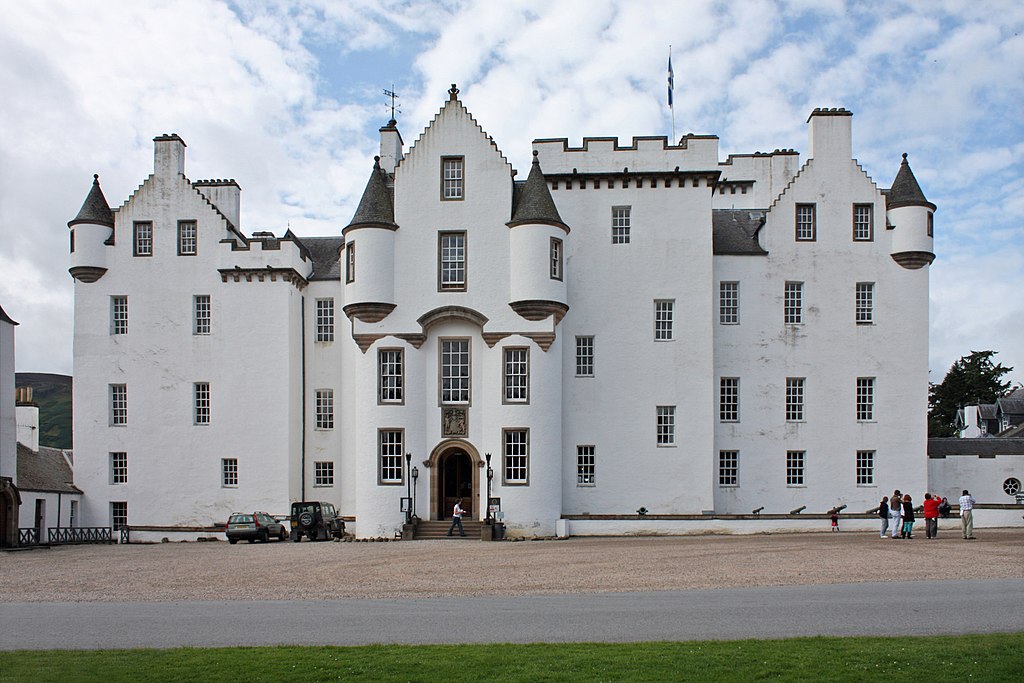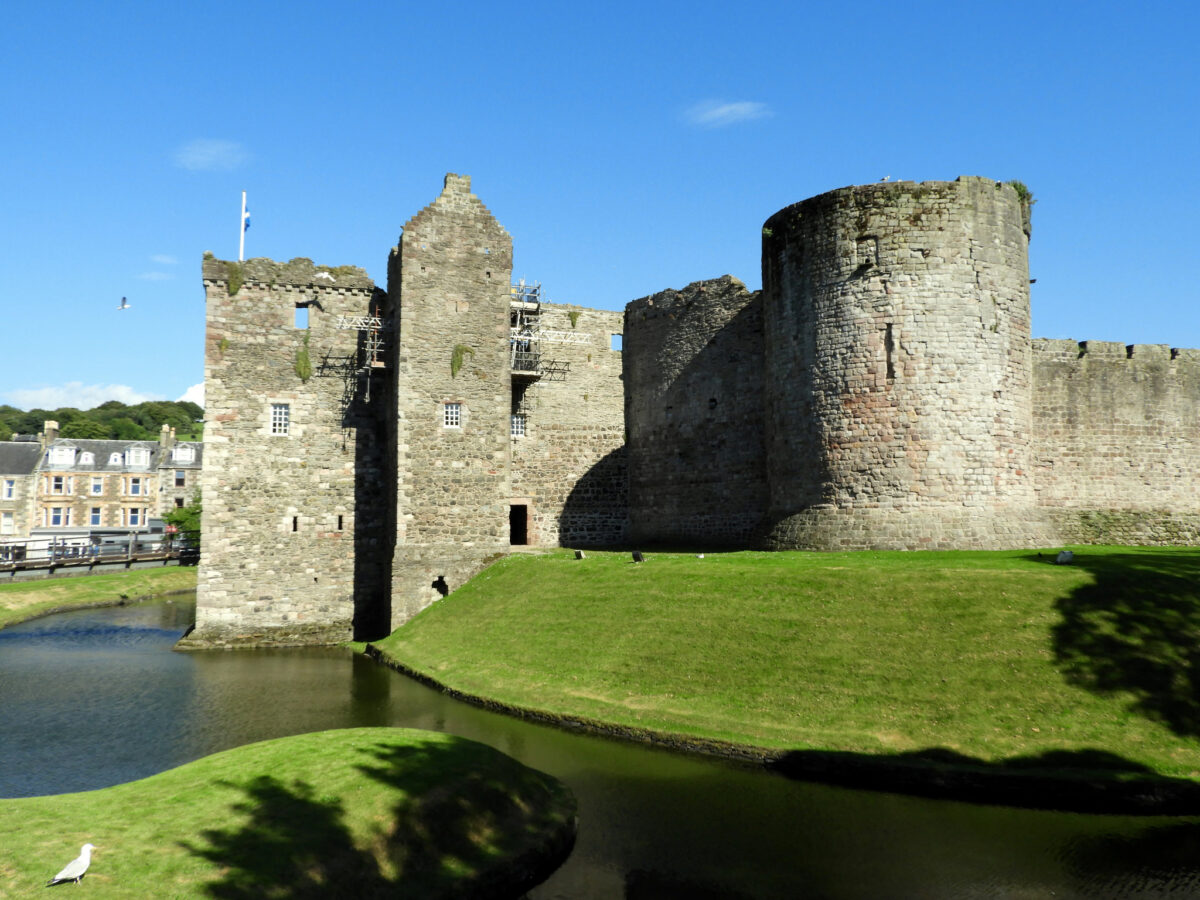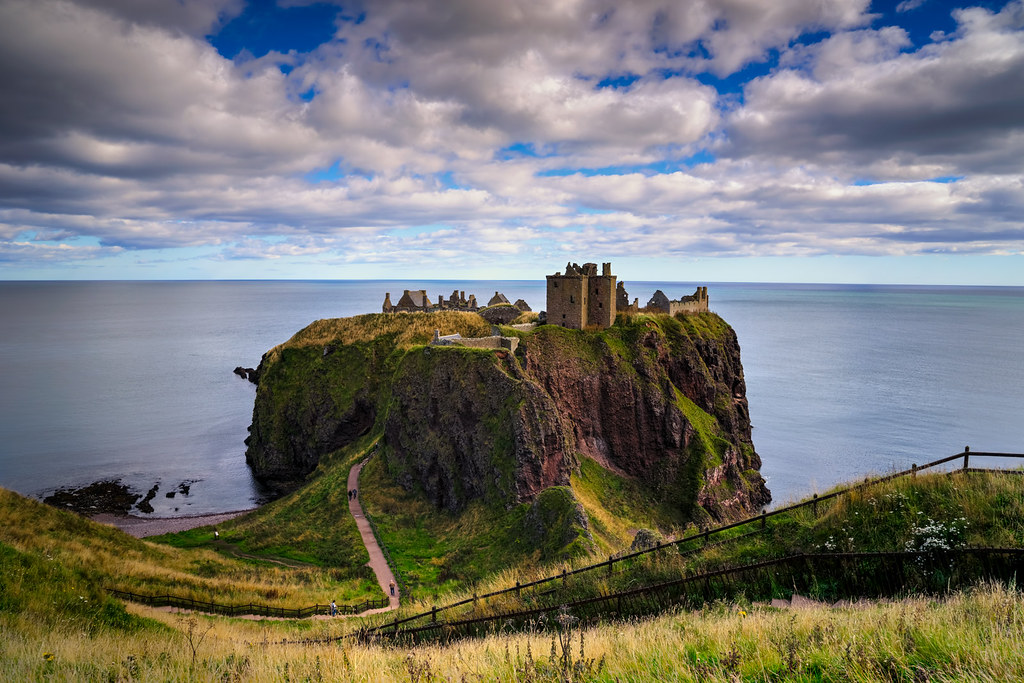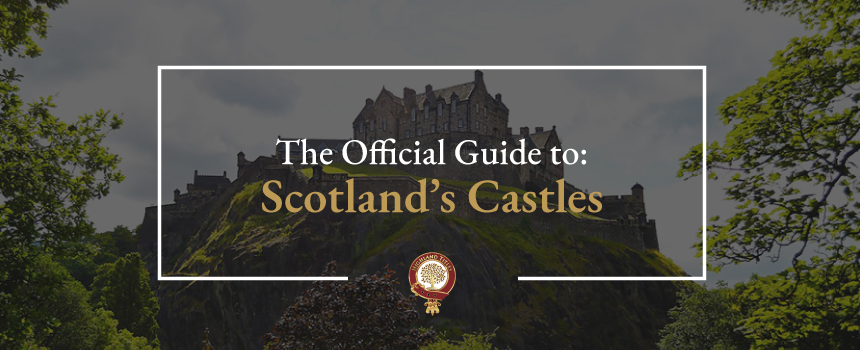
Map of castles in Scotland
From fairytale castles and fascinating stately homes to eerie ruins and haunted rooms, Scotland is fortunate to boast well over 2000 historic castles. As it would take anyone a considerable time to visit them all, we have compiled a list of our must-see castles in Scotland. Once you’ve become a lord, laird or lady, you might even fancy purchasing one!
We’ve travelled the length and breadth of the country in search of Scotland’s best castles, from the most romantic and scenic, to the most haunted and historic. Explore the most iconic Scottish castles using our interactive map and find the best for you to visit!
Find a Scottish Castle
Hover over a dot to find out more about a specific castle!
Castle Of Mey
Caithness, North Coast Scotland
Overlooking the Pentland Firth, towards the Orkney Islands, the homely and modest Castle of Mey is the most northerly located castle in Scotland. It lay abandoned, with no bathrooms or electricity, until Queen Elizabeth The Queen Mother happened upon it whilst visiting friends in nearby Dunnet.
The Queen Mother lovingly restored it, changing its name from Barrogill Castle to The Castle of Mey when she bought it in 1952. It proved her Highland retreat for nearly 50 years. The castle’s beautiful gardens, tearoom and animal centre make it an idyllic day out for all visiting the North Coast.
Dunrobin Castle
Golspie, Sutherland
With fairytale turrets and manicured grounds, Dunrobin Castle is arguably one of the most beautiful Scottish castles. One of Britain’s oldest, continuously inhabited homes, Dunrobin Castle is the most northerly of Scotland’s great houses. It remains home to the Sutherland family, who have lived there for over 700 years.
Complete with a museum in the original summer house, exquisite gardens and a renowned falconry display, Dunrobin Castle makes a beautiful summer’s day trip. Its 189 rooms are filled with fascinating artefacts and decorated in a style which complements the ‘French chateâu’ architecture.
Brodie Castle
Forres, Moray
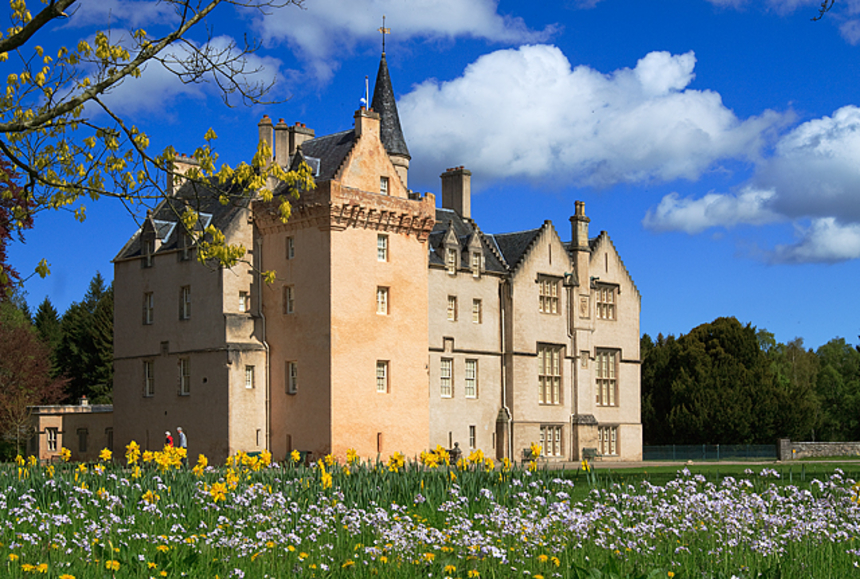
Based in the picturesque surroundings of Moray, Brodie Castle is one of the Scottish castles that could definitely be described as a ‘hidden gem’. It has an instantly recognisable rose tint, which is visible for miles across.
The gardens around the Castle are known as the Playful Garden, which is full of interactive attractions that explore its interesting history in a fun way that kids will love.
Cawdor Castle
Cawdor, Nairnshire
Located near the Highland capital, Inverness, Cawdor Castle is famed for its connection to Shakespeare’s Macbeth. The events upon which the play is based took place many years before it was constructed in the 15th century, though Shakespearean recitals still take place on the castle’s grounds during the summer.
Legend has it that the castle was built around a holly tree, dating from 1372, which visitors can still see in the dungeon today. Other points of interest include the impressive Drawing Room, the Tapestry Bedroom and the Dining Room, all of which showcase this Scottish castle’s sumptuous interiors.
Castle Stuart
Petty, Inverness
Located near Inverness, Castle Stuart is a restored tower house right on the banks of the Moray Firth. It is fully operational as a hotel and had 8 rooms, all of which are steeped in the history and the romanticism of the castle. It’s a luxury accommodation and an ideal place to host a wedding or other large event.
The history of the castle is interesting – it’s hard to imagine that it was a derelict ruin for 300 years. Apparently, it wasn’t completely empty though, as Castle Stuart is believed to have been haunted. It was built in the 17th century, and shortly after it was attacked. Although the castle has swapped hands since it was built, it is now back with the Stuarts. One of the most impressive elements inside is the spiral staircase, which is definitely worth the visit alone.
Urquhart Castle
Beside Loch Ness, Highlands of Scotland
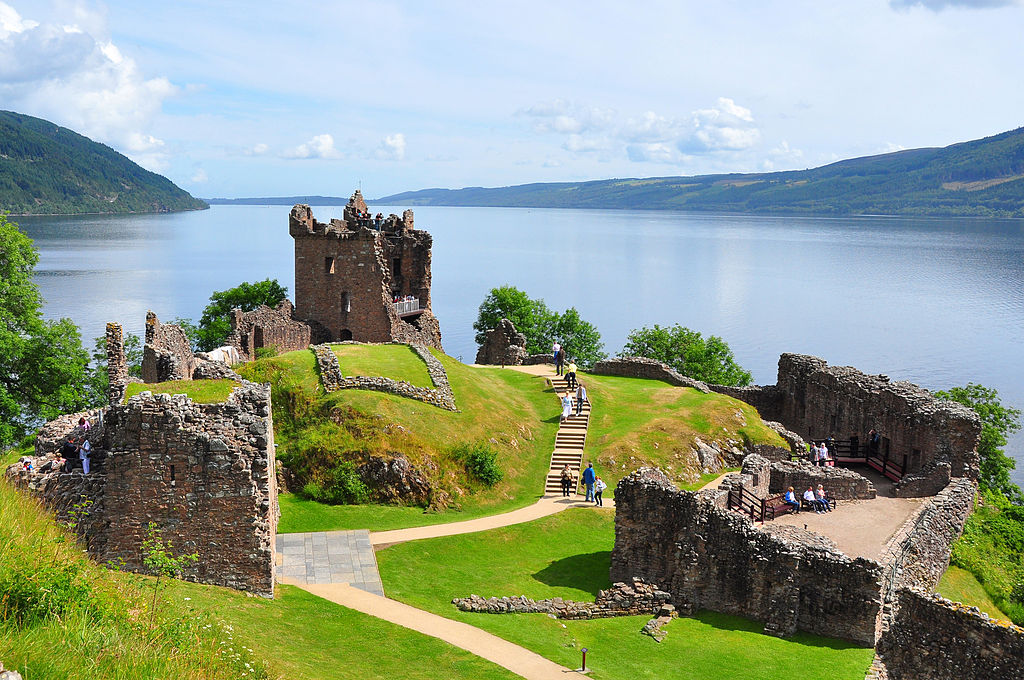
Perched on the edge of the iconic Loch Ness, Urquhart Castle is undoubtedly one of the best located and historically largest Scottish castles. Once a medieval fortress, was destroyed by the last remaining government troops garrisoned here during the Jacobite uprising.
Now largely in ruins. a visit to Urquhart Castle means exposure to the elements. However come rain or shine, the Highland weather only adds to the atmospheric experience of this spectacular location. Spend time viewing the full-sized working trebuchet on the grounds, or try to catch a glimpse of the elusive Loch Ness monster. The castle is famous for being captured by Robert the Bruce, after he had defeated the Comyns.
Eilean Donan Castle
Kyle Of Lochalsh, Inverness-shire
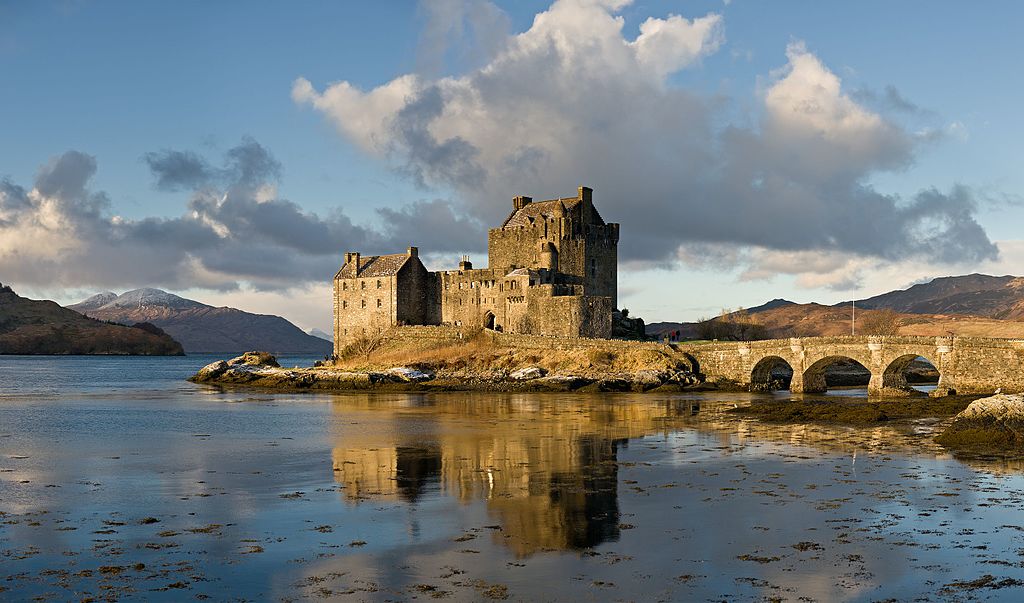
Located on an island where three sea lochs meet, Eilean Donan castle is surrounded by majestic Highland scenery. It is perhaps its unique position which has earned it the reputation as one of the most iconic Scottish castles. It is one of the most visited and photographed attractions in the Scottish Highlands.
The land upon which Eilean Donan was built was first inhabited around the 6th century. The first fortified castle on this land was built in the mid-13th century. Since then at least four different versions of the castle have been constructed, thanks to Scotland’s ever-changing feudal history.
Slains Castle
Cruden Bay, Aberdeenshire
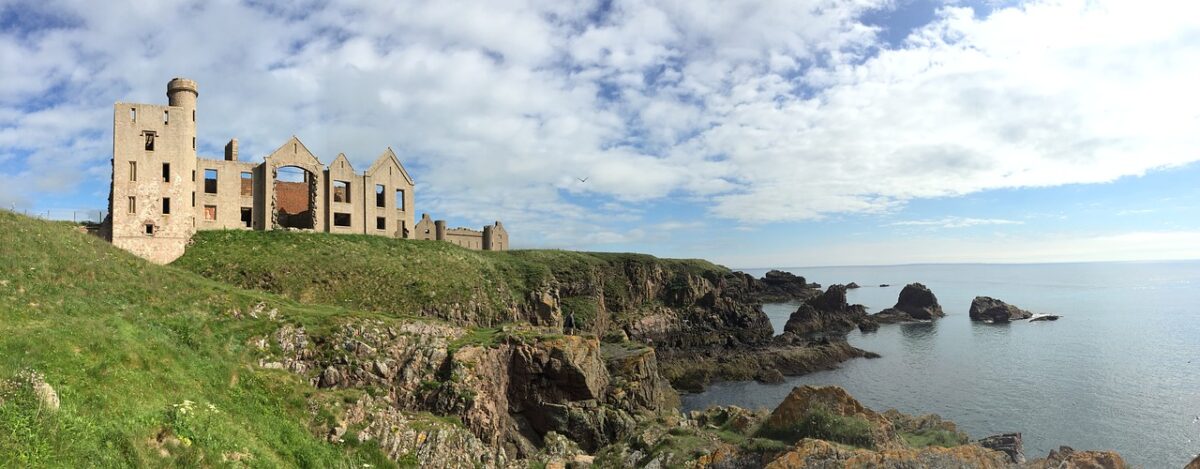
Slains Castle is a ruined castle in Aberdeenshire, built in the 16th century. At its peak, the castle and the surrounding greens were very large and consisted of 3 massive gardens. However, it now stands as a ruin, without a roof.
The castle is located on a cliff side, and although this allows for stunning views, it also means that it’s in a difficult position for renovations to take place, which likely explains much of the hold up with work on the apartments. The castle is well known for being slightly ‘creepy’, and you’d be hard pressed to call it attractive, but because it has remained untouched for so long, it does have a certain charm to it.
Craigievar Castle
Alford, Aberdeenshire
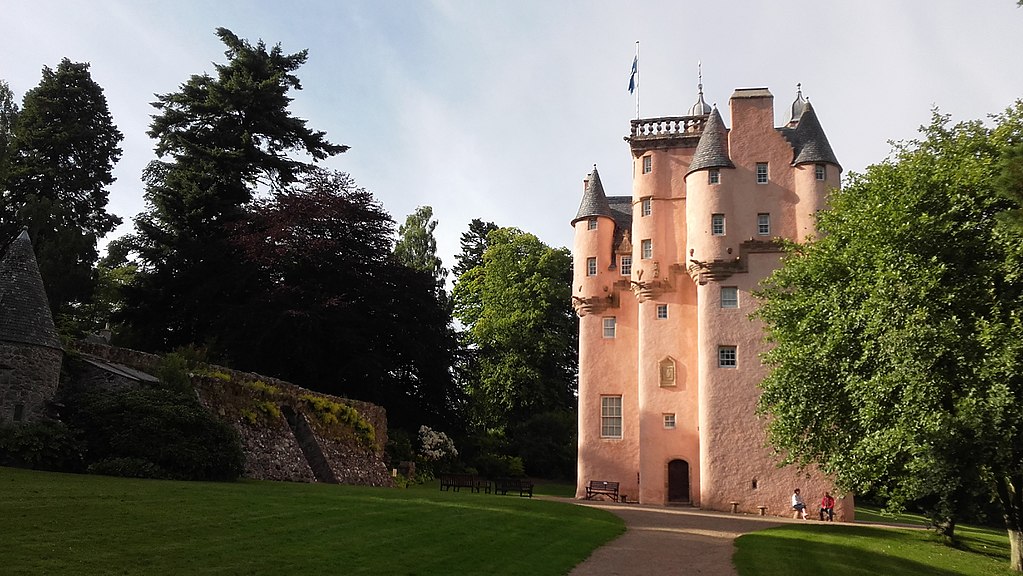
Anecdotally said to be the inspiration for Disney’s Cinderella Castle, Craigievar Castle and its elegant pink tower are truly enchanting. Set in the magical Aberdeenshire hills and spellbinding parkland, the castle boasts a glen garden. Its woodland is blanketed by bluebells in the early summer.
Its upper floors rely solely on natural light. This means that in order to catch a glimpse of its historic artefacts, they must be illuminated by shifting sunlight – exactly as they would have been when they were made. Other curiosities include an impressive collection of old armour – fit for a fairytale prince.
Drum Castle
Drumoak, Aberdeenshire
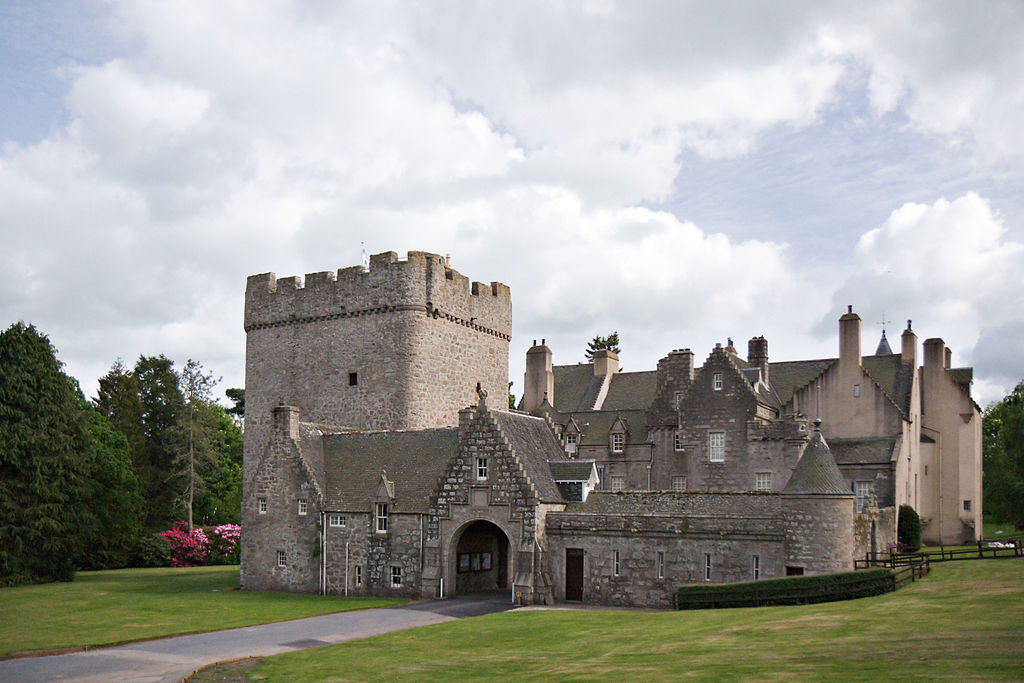
Drum Castle is one of the oldest tower houses in Scotland, and although it has undergone some renovation in recent years, the building has managed to retain a certain charm due to its visible age. The chapel attached to the building was built in the 1500s, and is an incredible place to visit.
After you’ve visited the buildings you can explore the Old Wood of Drum which surrounds the castle. The wood is home to Oak trees which date back from the 1700s.
Crathes Castle
Banchory, Aberdeenshire
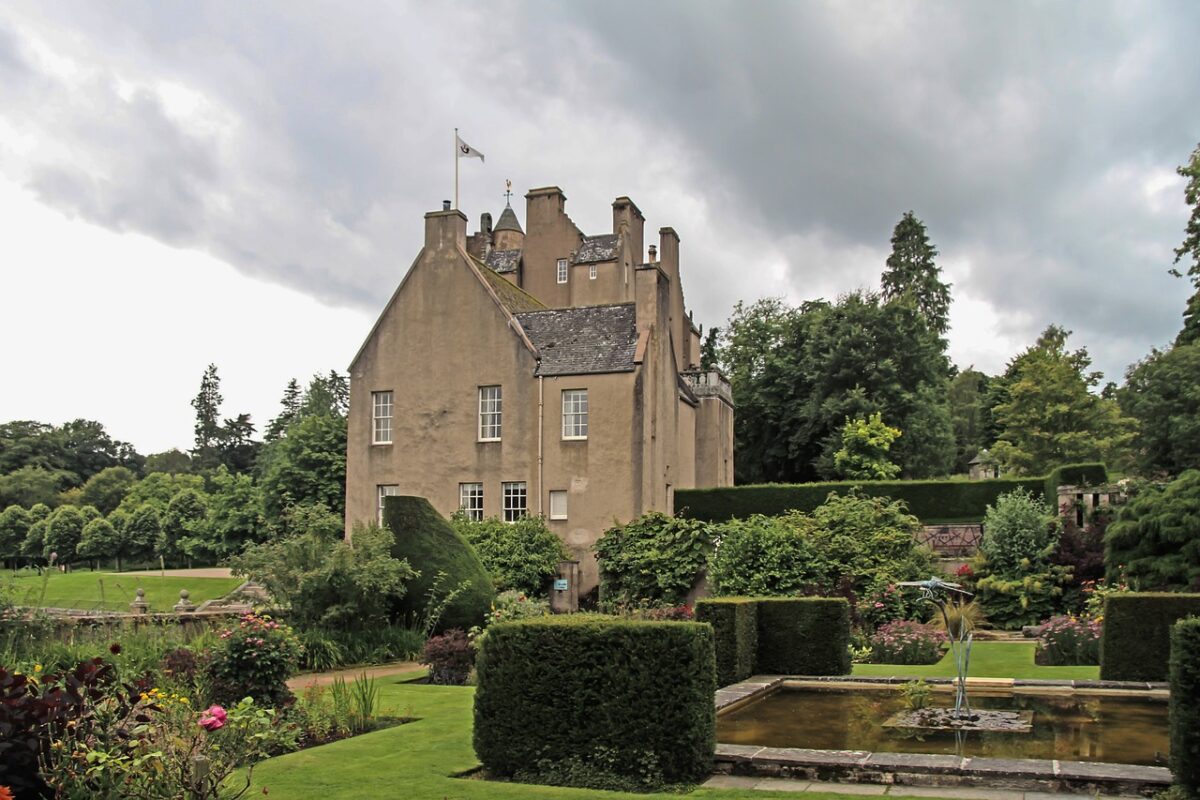
Set against a backdrop of rolling hills and located in a picturesque estate, Crathes Castle is a true example of a classic Scottish tower house. With exquisitely painted ceilings, grand portraits and antique furniture, Crathes Castle offers a memorable experience packed full of cultural history and resident ghost stories.
Beyond the towers and turrets, you can explore the famous grounds. Trails wind along the Coy Burn, where nature lovers might spot buzzards, herons and kingfishers. Horticulturists can also enjoy the richly planted walled garden, with sculpted topiaries, exotic blooms and herbaceous colours.
Balmoral Castle
Royal Deeside, Aberdeenshire
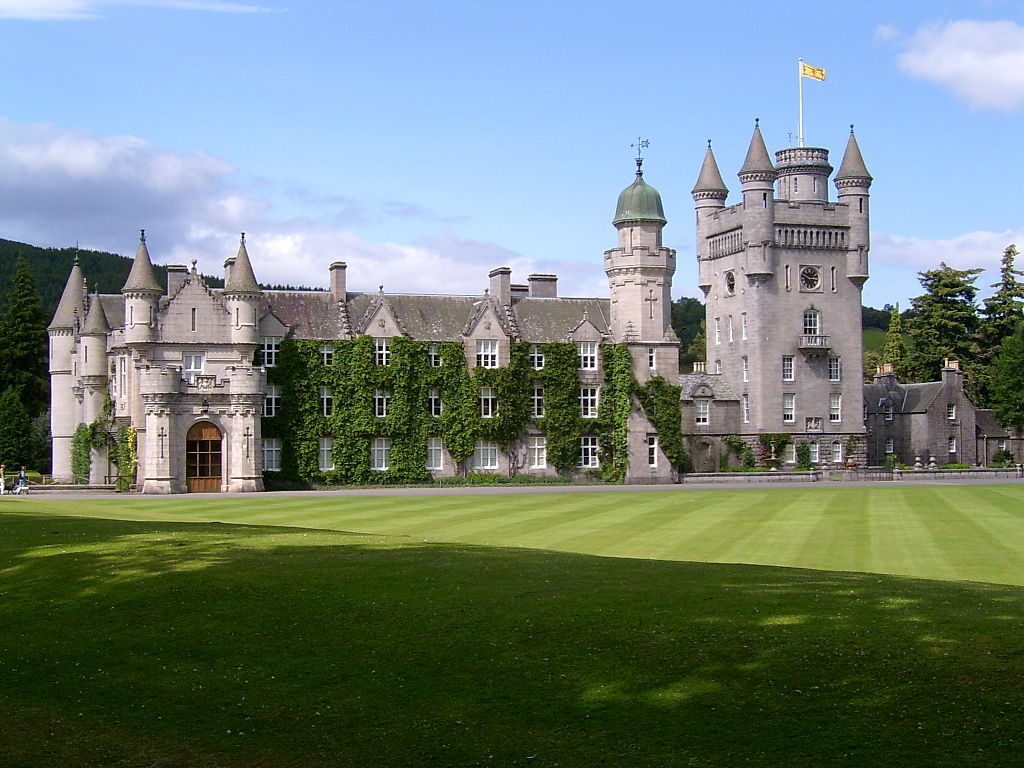
Balmoral Castle is a large estate house in Royal Deeside, Aberdeenshire, Scotland, near the village of Crathie, 6.2 miles (10 km) west of Ballater and 6.8 miles (11 km) east of Braemar. Balmoral has been one of the residences for members of the British Royal Family since 1852, when the estate and its original castle were purchased privately by Prince Albert, consort to Queen Victoria. They remain as the private property of the royal family and are not the property of the Crown.
Soon after the estate was purchased by the royal family, the existing house was found to be too small and the current Balmoral Castle was commissioned. The architect was William Smith of Aberdeen, although his designs were amended by Prince Albert. This is one of the Scottish castles that is a fine example of Scottish baronial architecture and is classified by Historic Scotland as a category A listed building.
In 2018 the grounds, gardens, exhibitions, gift shop and cafe will be open to the public on a daily basis from Friday 30th March until Tuesday 31st July. Opening times are from 10.00 a.m. until 5.00 p.m. However please note that the last recommended admission is at 4.30 p.m.
Blair Castle
Blair Atholl, Perthshire
Near the village of Blair Atholl, in Perthshire, you can find Blair Castle, built in 1269 and known for being the ancestral home of the Clan Murray and historically the seat of their chief, the Duke of Atholl.
The oldest part of the castle is the six-storey Cummings or Comyn’s Tower and its many rooms (over 30) feature fascinating artefacts, such as weapons, hunting trophies, paintings, and souvenirs of the Murray clan. Some of the highlights include the stunning Victorian Ballroom, decorated with over 170 pairs of antlers, and the Entrance Hall, which features weapons used at the Battle of Culloden.
Doune Castle
Doune, Stirling

Photo by Wikifan75 / CC BY-SA 3.0
On the banks of the River Teith and close to the village of Doune, you can find Doune Castle. Built in the 14th century, it has striking 100ft walls and is one of the best-preserved great halls of all the Scottish Castles. Its glorious exterior and interiors have been featured in some of the world’s most popular TV shows, including Game of Thrones, Monty Python and the Holy Grail, and Outlander.
Explore Doune Castle and don’t miss the Lord’s Hall, the view from the battlements, and the courtyard. It is open throughout the year, and you can even take an audio tour narrated by Monty Python’s Terry Jones.
READ MORE: Doune Castle: History, Royal Visitors & Silver Screen
Stirling Castle
Stirling, Stirlingshire
Overlooking the city of Stirling, the former capital of Scotland, Stirling Castle boasts an incredible view. It is often regarded as being Edinburgh Castle’s better-looking brother. Certainly, it has remained in incredible condition over the years, despite being built in the 15th/16th century. Stirling Castle was used as a palace as well as a fortress, so although it is beautiful to look at, it is also quite intimidating.
It is located atop Castle Hill, and is surrounded by steep cliff edges. Stirling Castle is perhaps most famous for being the place where Mary Queen of Scots was crowned.
There are many great things to do if you visit – stand and admire the Grand Hall, the largest medieval banqueting hall ever built in Scotland. There is a large car parking area at the castle, however, it is not the easiest to get to if you’re walking (all up quite a steep hill). Interactive and audio tours are available at the visitor centre if you want a guided tour.
READ MORE: Stirling Castle: History, Highlights and Heritage
Cambuskenneth Abbey
Cambuskenneth Village, Stirling
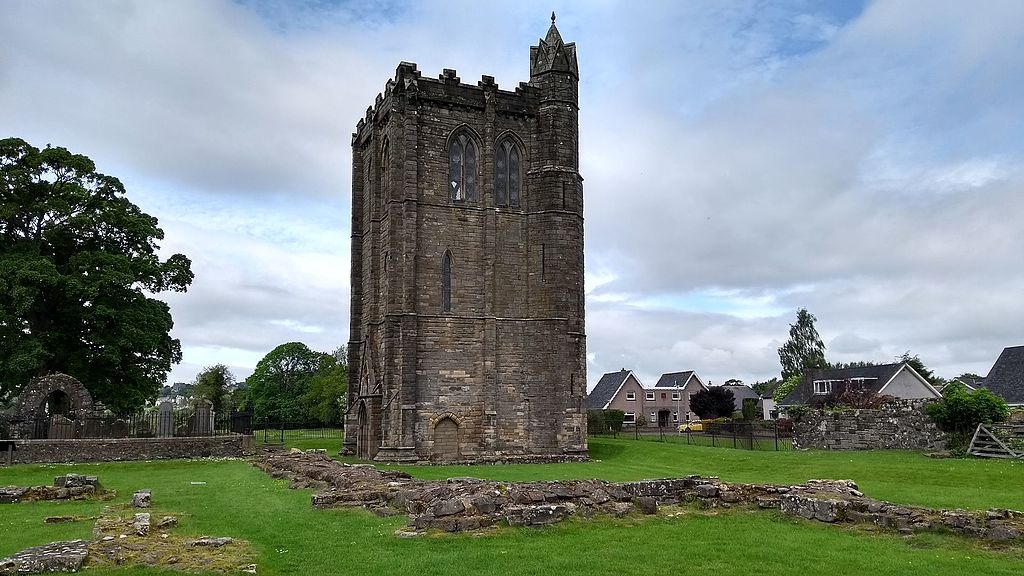
Cambuskenneth Abbey is a mostly ruined Augustinian abbey in Stirling, located near the River Forth. The abbey was founded in the 12th century at the order of David I and was dedicated to the Virgin Mary. It regained the status of a royal abbey for the time that Stirling was the capital of Scotland. Cambuskenneth is also famous for being the resting place of King James III.
Possibly the most famous aspect of the abbey is the bell tower, which is generally considered to be one of the best examples of 12th-century architecture still standing in Scotland.
Castle Campbell
Dollar, Clackmannanshire
Once known as the Castle of Glooms, the medieval Castle Campbell can be found nestled high above Dollar Glen, in Clackmannanshire, and is mostly known for being the Lowland stronghold of the Clan Campbell. Other historical connections include both Mary, Queen of Scots, and John Knox, Scotland’s Reformation leader and founder of the Presbyterian Church of Scotland.
Castle Campbell is one of the best-preserved tower house Scottish castles and if you choose to visit, don’t miss the beautifully kept terraced gardens and the original 15-century tower.
READ MORE: Castle Campbell: Friends, Foes and Architecture
Dunfermline Palace and Abbey
Dunfermline, Fife

Famously the final resting place of King Robert Bruce and seven other Scottish kings, Dunfermline Palace and Abbey play a key role in Scotland’s history. The present nave stands over the remains of a great 11th-century Benedictine abbey founded by Queen Margaret, and later re-established by her son in 1128.
Encompassed in the abbey complex are the ruins of a palace built by King James VI in the 16th century. It became home to his queen, Anna of Denmark, before their departure for London. It was also the birthplace of Charles I, the last monarch to be born in Scotland.
Kellie Castle
Pittenweem, East Neuk of Fife
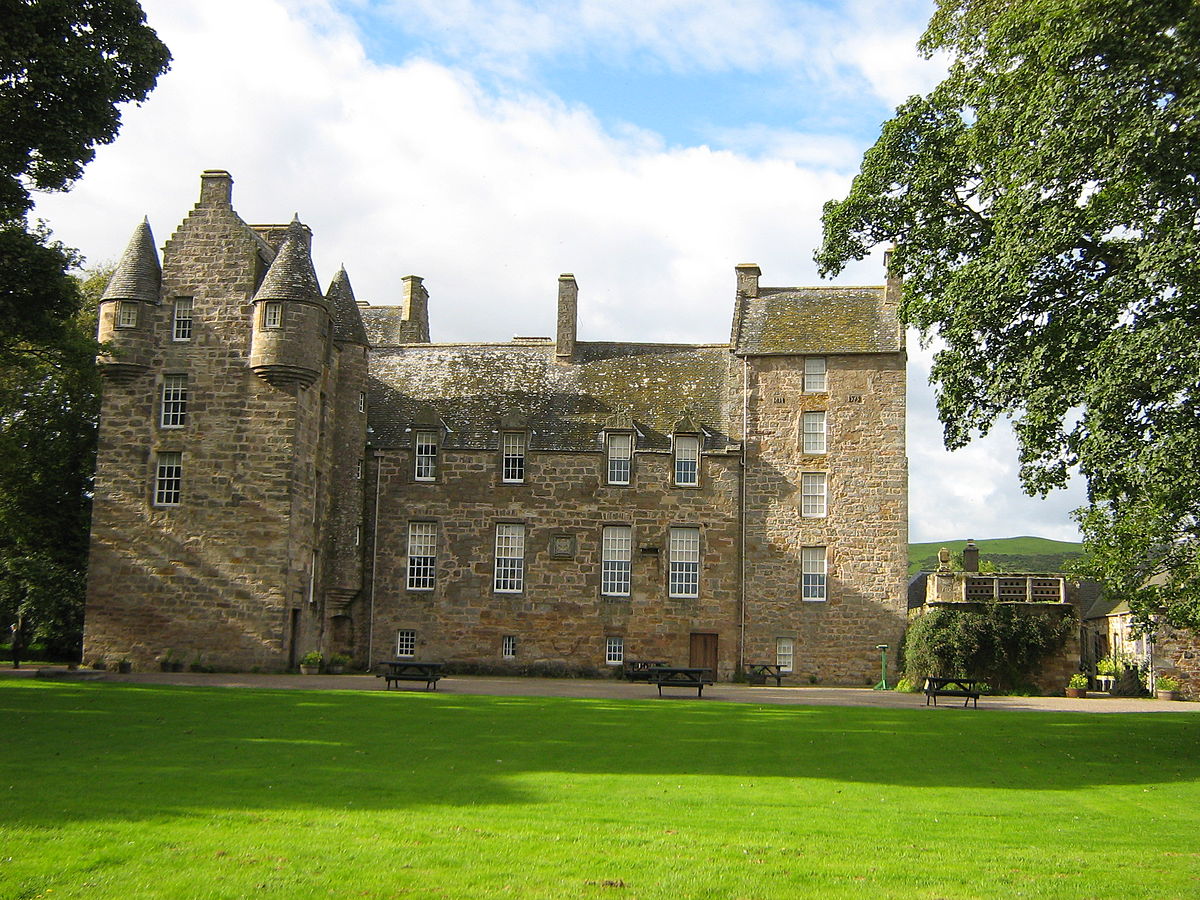
Kellie Castle effortlessly combines Medieval atmosphere and Victorian style, remaining very much untouched. The oldest parts of the castle which are still standing, date as far back as the 14th century, however, the more Victorian-inspired parts are mostly from the 19th century.
The surroundings are just as impressive as the interior. There is an ‘Arts and Crafts’ garden which showcases the incredible array of plant life. You’ll find everything from fruits and vegetables to roses in the castle gardens, and they are well worth an exploration.
St Andrews Castle
Royal Burgh of St Andrews, Fife
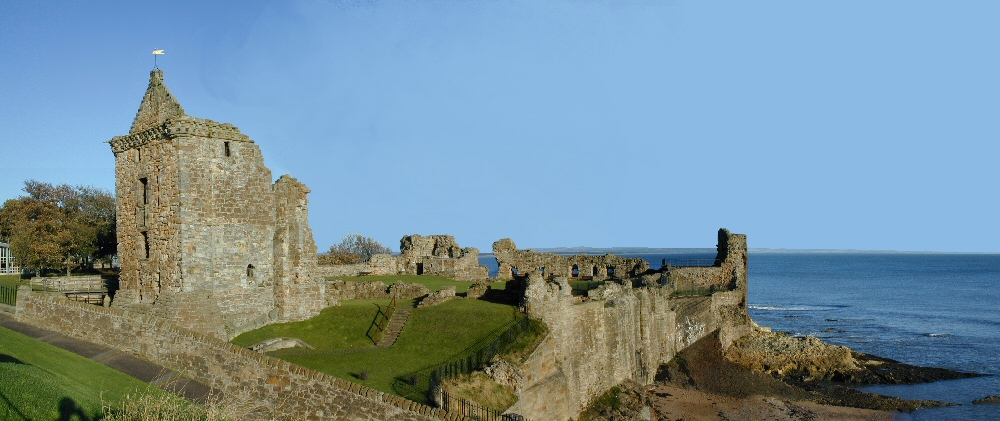
Generally, the weather is quite good in St Andrews, however, it’s still advised to bring warm clothing and suitable footwear with you when visiting in case of rain. St Andrews isn’t the easiest place to get to, however, it is a very pleasant drive if you do decide to take the trip, and there are plenty of other great stops along the way in this Scottish castle area of Fife.
Torwood Castle
Torwood, Falkirk
Close to the village of Torwood, lies the ruinous 16th-century Torwood Castle. The L-shaped tower house dates back to 1566, according to a stone found near the premises in 1918. Torwood Castle is known for having been the seat of the ancient and noble Clan Forrester, however, much of its history remains a mystery.
Torwood Castle is not open to the public, yet we still recommend a nice walk around the main building and inside the ruined walls, which provide fascinating yet eerie background.
READ MORE: Torwood Castle: History, Mystery, and Architecture
Blackness Castle
Blackness, Linlithgow
Built in the 15th century by one of the most powerful families in Scotland, the Crichtons, Blackness Castle was used as an artillery fortress. Throughout the years, it has been used as a royal castle, prison, and even film location for TV shows, such as Ivanhoe and Outlander.
Due to its unusual shape and its stone ship appearance, Blackness Castle has been nicknamed “the ship that never sailed”, and like a large ship that has washed up on the shores of the Firth, the castle’s north tower points out to sea like a stern. If you enjoy military history, Blackness Castle is a must-see part of Scotland’s past – and open to visitors throughout the year.
READ MORE: Blackness Castle: Feuds, History and Architecture
Edinburgh Castle
Edinburgh
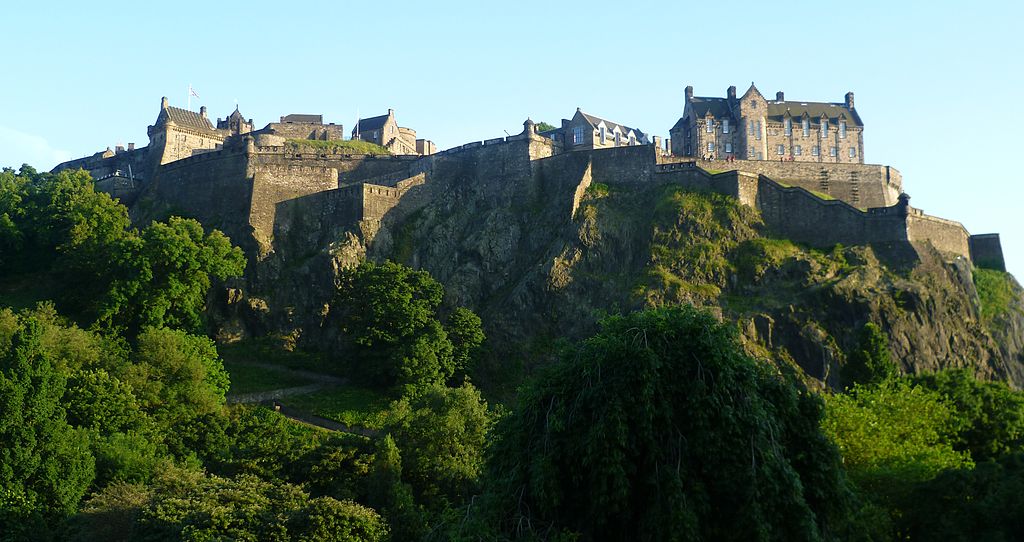
Edinburgh Castle is one of the most famous Scottish castles in the world. Overlooking the capital of Scotland, it is located on Castle Rock and is a daunting fortress which dominates the Edinburgh skyline. It is believed to have been built in the 12th century, but despite the age it is in remarkably good shape and is still regarded as one of the best attractions in the UK, frequently winning tourism awards.
Guided tours and audio tours are also available in 8 languages. The castle is home to the Crown Jewels of Scotland, as well as the Stone of Destiny, the famous 15th century gun known as Mons Meg, and the one o’clock gun (which fires every day at 1 o’clock!). It is also home to the National War Museum of Scotland.
Dirleton Castle
Dirleton, East Lothian
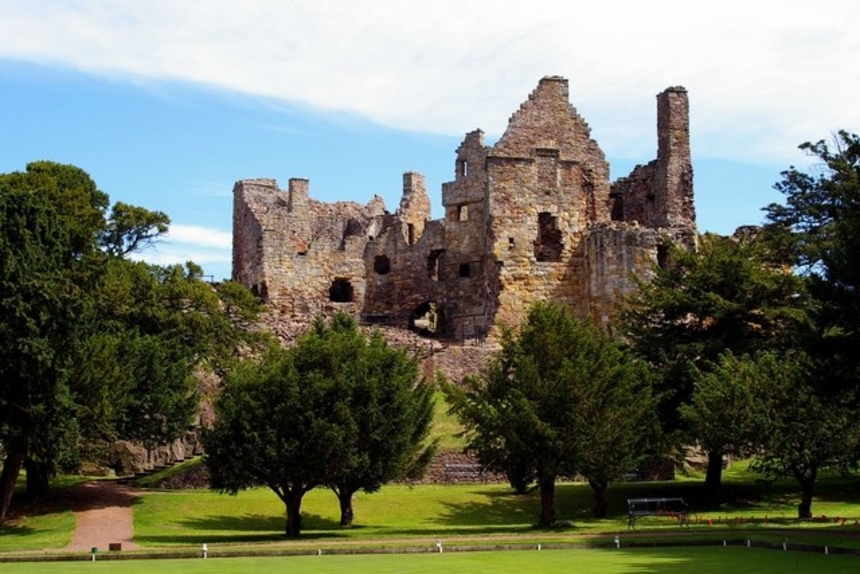
Built in the 13th century, Dirleton Castle has remained remarkably intact considering it’s age. Nestled between Edinburgh and North Berwick, it is located in a strategically important location which has made it the target of several sieges since it was built, swapping hands frequently. The castle might be a reflection of battle and conflict, but the surrounding gardens give no impression of this. They’re incredibly well kept and are fantastic to wander around.
There is a dovecot within the castle (for holding pigeons) which is considered to be one of the best-preserved Scottish castles and is home to over 1,000 nesting holes. It is very convenient for visitors with disabilities, as it has wheelchair access and is located very close to the main road (which is flat and runs through the centre of Dirleton).
Tantallon Castle
North Berwick, East Lothian
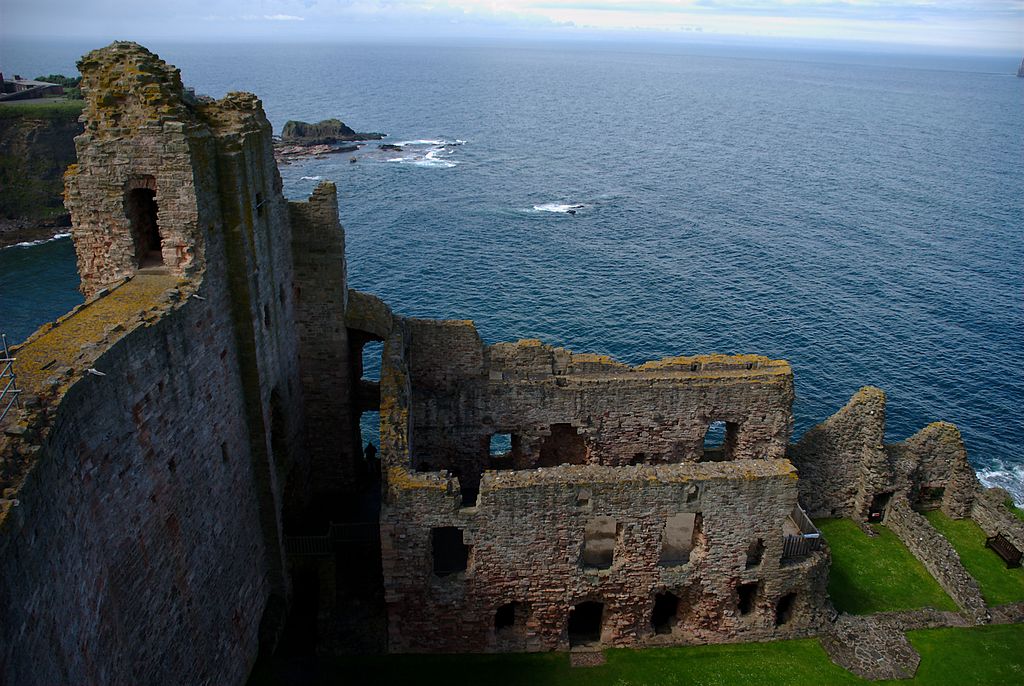
Built in the 14 century, Tantallon Castle is a coastal castle based in East Lothian which is described as ‘semi ruined’. Despite being described so, it is still impressively intact considering the age and location. It is perched on a hill overlooking the Firth of Forth, and has endured harsh sea winds for hundreds of years. It is accessible throughout most of the year, however, due to its proximity to the sea, it is often forced to close access to the public in adverse weather.
It is built with red sandstone and still has a distinctively red tinge to it. Tantallon is one of the most popular Scottish castles, proving particularly popular with filmmakers, as its dramatic location translates very well to the big screen. If you’re into wildlife then on a clear day the castle also makes a great vantage point for watching gannets and other seabirds on the North Sea.
Rothesay Castle
Rothesay, Isle of Bute
Rothesay Castle is a ruined Castle in Bute, which is in the West of Scotland. Although dating back from the 13th century, it has withstood the test of time incredibly well and is still very intact, making it a particularly popular choice amongst Scottish attractions to visit. There is also a broad moat surrounding it, which made it very difficult to attack. The castle was mostly known for being associated with the Stewart kings of Scotland.
It is Scotland’s only circular curtain wall, the shape of which is still very visible. A wooden bridge leads over the moat for easy access to the castle. There is also a small visitor centre with a shop which is worth a visit if you want to learn more about the history of this fascinating castle.
Dundonald Castle
Dundonald, South Ayrshire
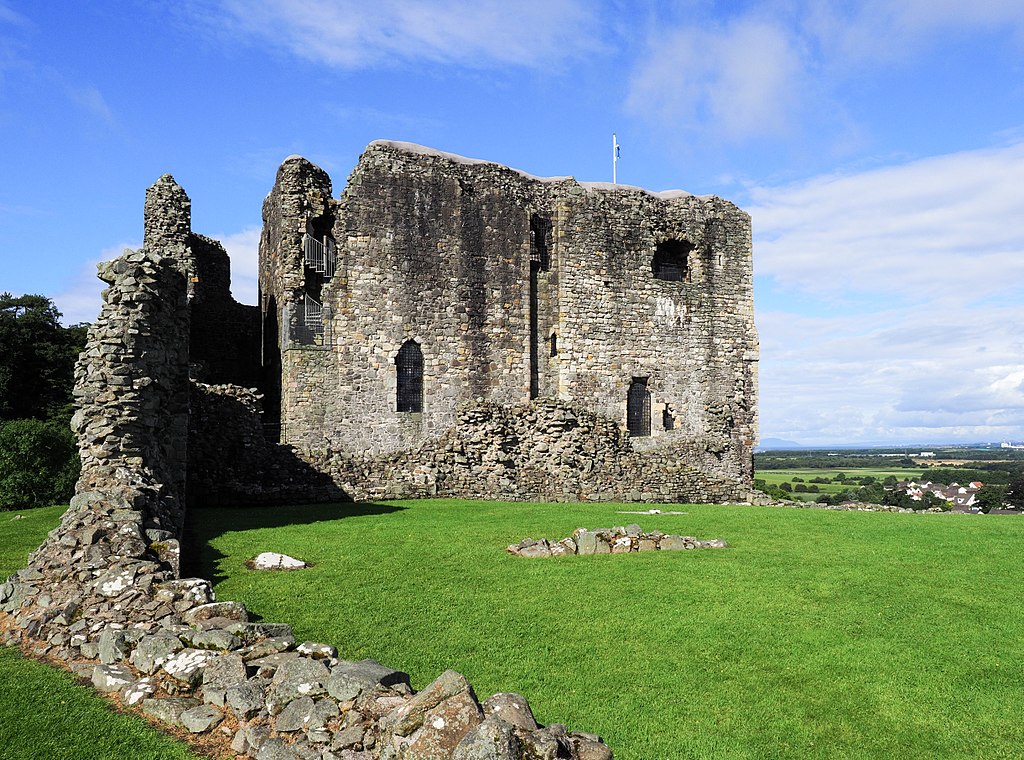
Commanding fine views over the Firth of Clyde, Dundonald Castle is a fine example of a medieval tower house. Built in 1371, it sits atop a prominent hilltop in Dundonald village and was built on the site of earlier Scottish castles belonging to the High Stewards of Scotland. As such, it is regarded as the cradle of the Stewart Dynasty.
Boasting high-vaulted ceilings and gloomy dungeons, Dundonald Castle remains a splendid Scottish stronghold. The main tower was built by King Robert II in the 1370s to mark his succession to the throne. Its grounds offer scenic walks and have provided bountiful artefacts, found during archaeological excavations.
Culzean Castle
Maybole, Carrick
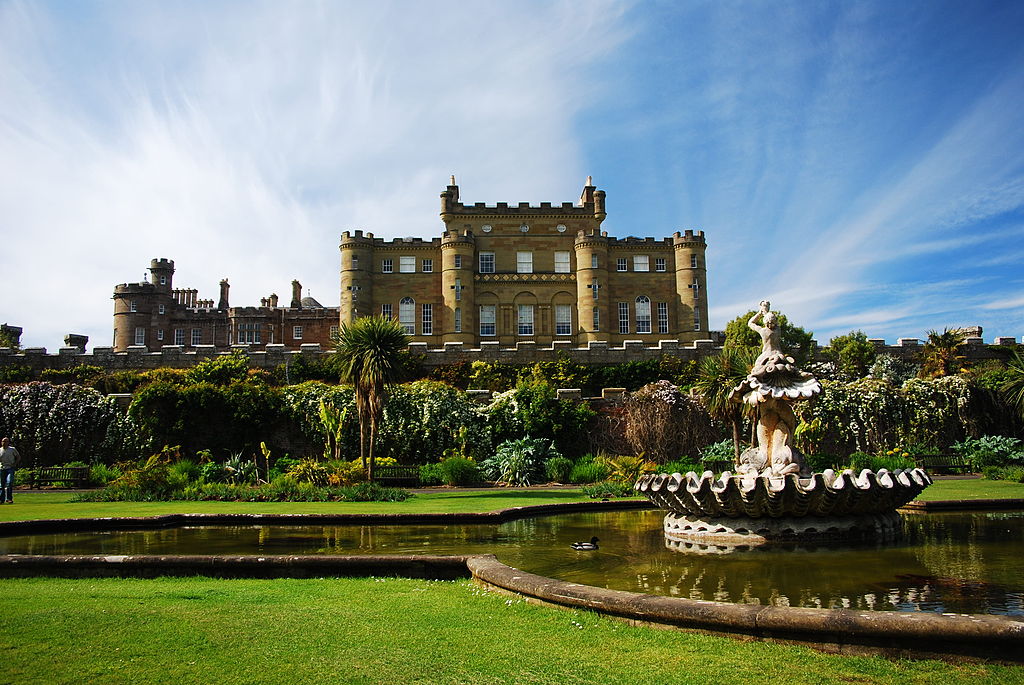
Perched atop the Ayrshire cliffs, Culzean Castle is like no other grand Scottish home. Once the playground of David Kennedy, 10th Earl of Cassillis, this expansive estate was built as a symbol of wealth and status. It is unsurprising that it boasts fruit-filled glasshouses (apparently somewhat inspired by the glass restaurant at the cellars), flamboyant floral gardens, a swan pond and an ice house.
As if its unique decor, ample treasures and magnificent scale weren’t glamorous enough, Culzean Castle has strong connections to President Eisenhower. The top-floor apartment was presented to him for his role during World War II, and now forms an impressive suite you can book as a paying guest.
Caerlaverock Castle
Caerlaverock, Dumfries
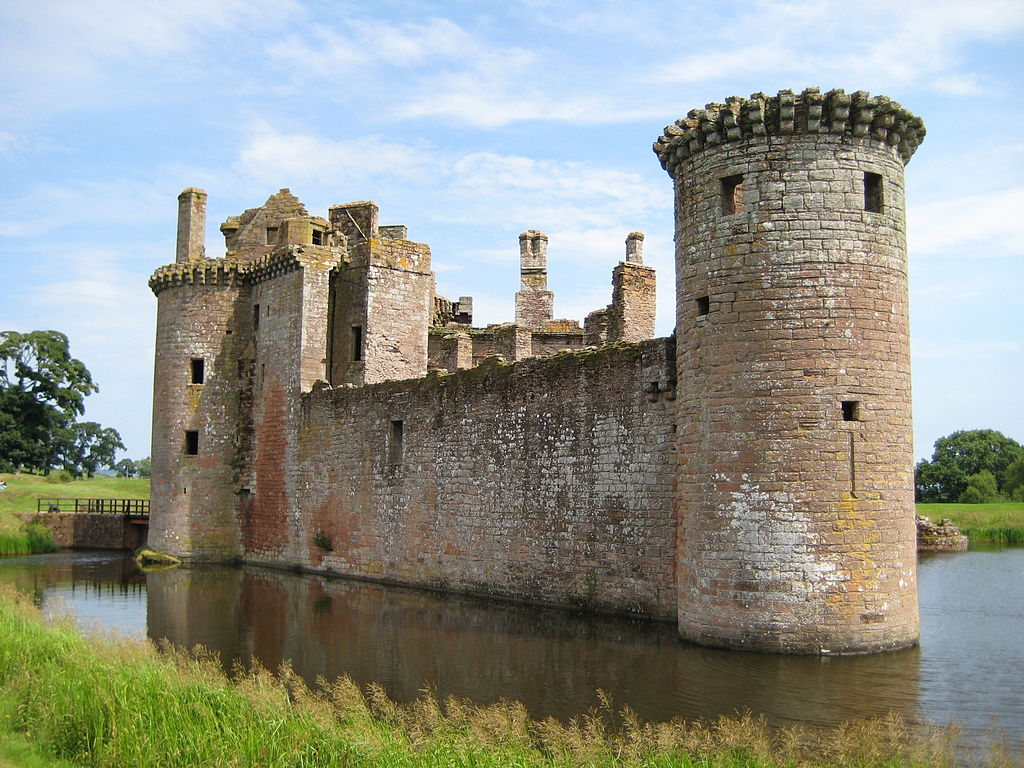
Caerlaverock Castle is one of the best Scottish castles to visit, and is also one of the most steeped in history. It is well known for its ‘fairy tale appearance’, which has made it a popular filming location over the years. The castle is fairly ruinous, but can still be explored. Plus, the surrounding grounds are very pleasant too, and there is a moat around which still looks very attractive.
The castle has a unique triangular ground plan. Its turbulent history owes much to its proximity to England which brought it into the brutal cross-border conflicts and you can enjoy a fascinating siege warfare exhibition complete with reconstructions of medieval siege engines.
Threave Castle
Castle Douglas, Dumfries
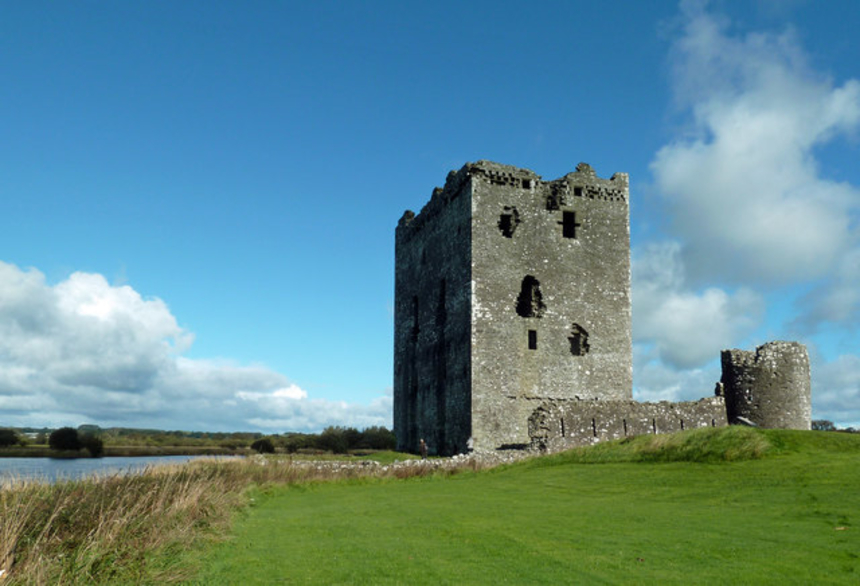
Located next to the River Dee, Threave Castle is a 14th century that was originally built for the Black Douglases. At 30m high, it is quite a daunting fortress which will have withheld countless attacks. Equally impressive is the artillery fortification on the site, which famously kept James II at bay during a heavy attack.
Threave Castle is not the most accessible of Scottish castles on the list by any means – the best way to reach it is by boat. There is a small gravel car park on-site where the boats are, but it has no accessible bays marked out which makes it very difficult for disabled visitors. The castle would definitely be regarded as ‘ruined’ however much of the building is still intact, and the location alone makes it well worth a visit.
Braemar Castle
Braemar, Aberdeenshire
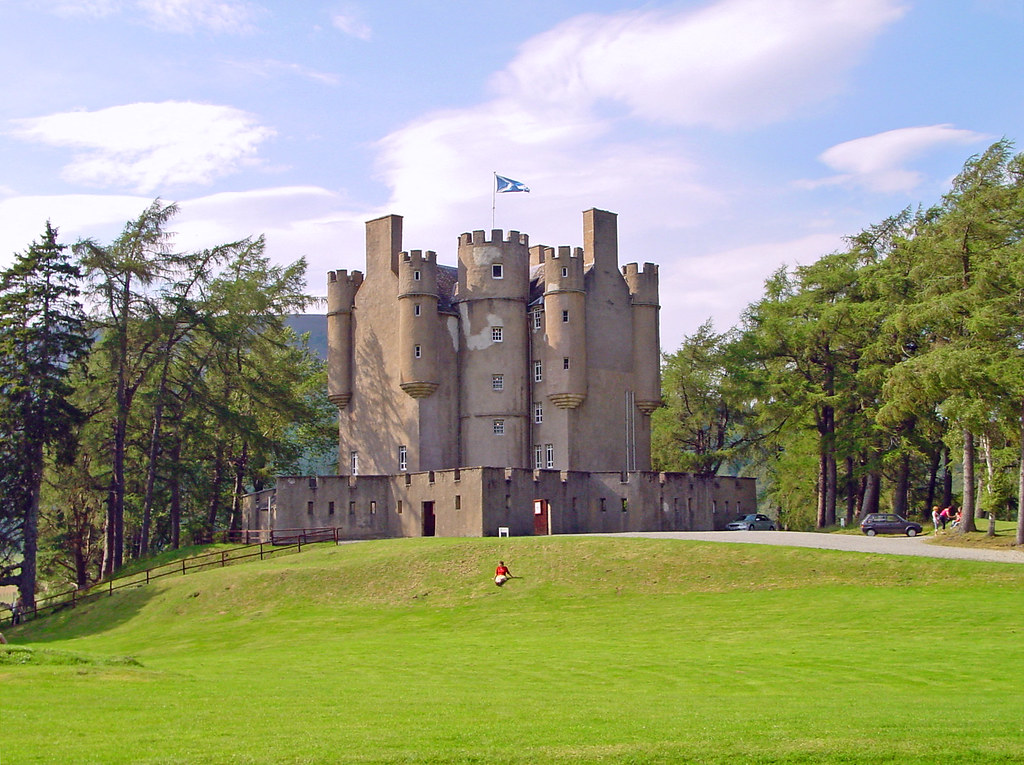
Braemar Castle was built in 1628 near Aberdeenshire as a hunting lodge by the Earl of Mar (John Erskine). In 1689, it was burned during the Jacobite rising and later in the years it was rebuilt and became a property of the Clan Farquharson and remains such till our days.
It is believed that the castle is haunted by a ghost of a bride, who threw herself out of the window after her fiancé deserted her. To pay a visit to this marvellous castle and walk its grounds you would just need to take the A93 road from Braemar Village, which is conveniently located near. There is a parking area that is just a short walk from the castle.
Inveraray Castle
Inveraray, Argyll
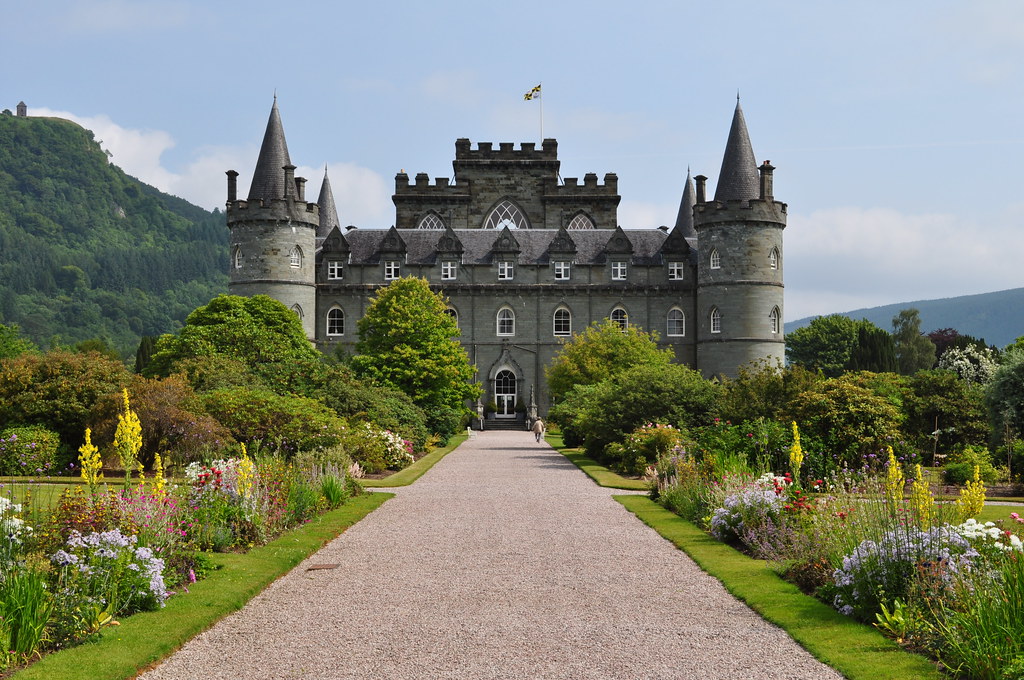
Inveraray Castle is a quite mesmerizing castle located near Loch Fyne which provides a genuinely marvellous view from the castle grounds. The castle is a perfect example of early Gothic Revival architecture. It was built in the 18th century and has served as a seat for Dukes of Argyll, chiefs of Clan Campbell. The castle remains as the ancestral home till nowadays.
It is definitely worth the visit with its vast grounds and gardens, weapons collection display and many interesting activities. In addition, the castle was featured in one of the Downton Abbey episodes as “Duneagle Castle”.
Dunnottar Castle
Stonehaven, Aberdeenshire
Dunnottar Castle is a fortress ruin located on the top of a 160-foot rock surrounded by the North Sea. It served as a seat of Earls Marischal. It was burned, rebuilt, and burned again. Currently, ruins spread along the rock it stands on.
Over the years of its prosperity, it was visited by important historical personas like Mary Queen of Scots, the Marquis of Montrose, William Wallace and the future King Charles II. In the 17th century, the castle was a hiding spot for Honours of Scotland due to Oliver Cromwell’s invasion.
Glamis Castle
Glamis, Angus
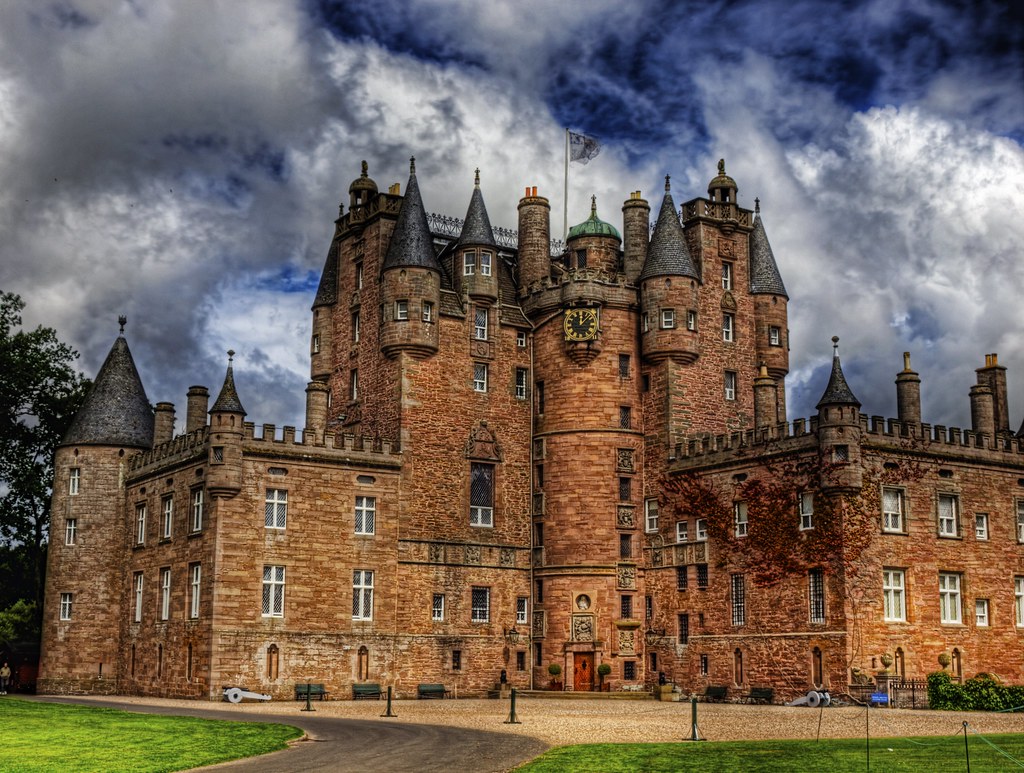
Glamis Castle in its present state dates from the 17th century. It is currently open to the public while being home to the Earl of Strathmore and Kinghorne. Before that, it was the Lyon family home from the 14th century. Glamis Castle is famous because Queen Elizabeth The Queen Mother spent her childhood there. Also, Princess Margaret was born there.
The castle has a stunning history that will be revived by guides taking you through every room where legendary events took place. Definitely have a walk in the gorgeous gardens that look beautiful all year round.
Brought to you by Highland Titles
Highland Titles’ mission is to conserve Scotland, one square foot at a time™. By selling souvenir plots of land and titles we are funding our Nature Reserves and conservation projects. Join us and become a Lord, Lady or Laird* of the Glen!
The Scottish Highlands is an area of outstanding natural beauty, and in this mountainous, sparsely populated area, it’s no surprise that you can find a wide variety of impressive resident animals. If you’re willing to brave parts of this wild and untamed region and know where to look, it can be a very rewarding wildlife watching experience. Here are just a few of the many and varied creatures that call the Highlands and Scotland home; from the land to the sea, and even the sky.
Golden Eagle Red Squirrel Pine Marten Bottlenose Dolphin Wildcat
Golden Eagle
UK Population: 440 pairs Status: Protected – Wildlife & Countryside Act Lifespan: 23 years
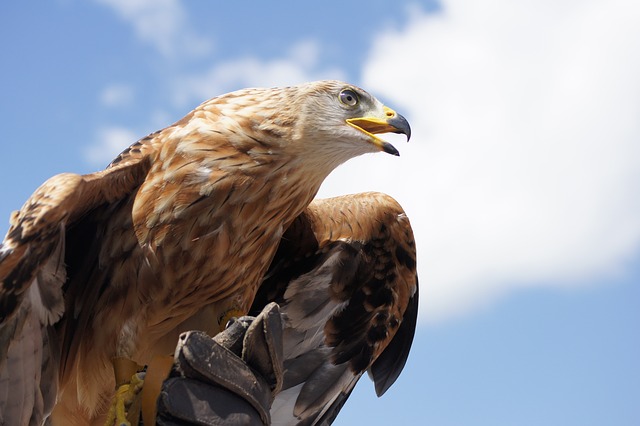
You shouldn’t just limit your search to the ground when travelling around the Scottish Highlands. If you keep your eyes peeled, you may even spot one of Scotland and the UK’s most iconic and majestic birds; the Golden Eagle. Golden Eagles can be found soaring high up on air currents, though you may want the assistance of a pair of binoculars for a better view. Guided tours can give you an even better chance of spotting these impressive airborne predators, and you’ll be sure you’re seeing the real thing rather than a smaller bird of prey.
Threats: Illegal persecution and low food availability, especially in parts of western Scotland, are the main threats to the Scottish golden eagle population.
Red Squirrel
UK Population: 161,000 Status: Near threatened Lifespan: Up to 7 years
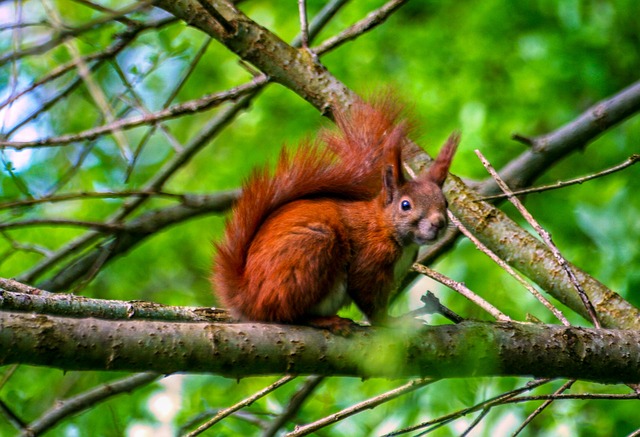
Now an endangered species, you’ll be lucky to catch a glimpse of this cute and charismatic critter, but it will be worth it if you do. The best places to see Red Squirrels in the Highlands include Caledonian pinewoods in the Cairngorms and Hazel woods beside the road, though they can also be found in mixed woodland throughout the area. While populations in England and Southern Scotland have suffered from the introduction of the non-native Grey Squirrel, luckily the Highland population of Red Squirrels have not been affected yet.
Threats: Disease, loss of woodland habitat and competition with grey squirrels.
Pine Marten
UK Population: 3,500 Status: Priority Species – UK Biodiversity Action Plan Lifespan: 12 years
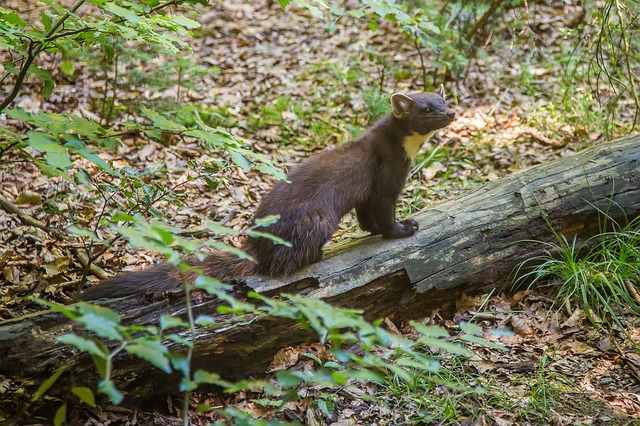
This elusive mammal lives in woodland areas, where it makes its home in the trees. While it may look cute, the Pine Marten is an effective predator and preys on rodents, birds, insects, eggs and much more. A skilled climber, its semi-retractable claws help it skilfully move around the treetops. Pine Martens are still hard to see in the wild, though they can sometimes be found visiting bird tables. Dawn and dusk are the best times for spotting this unique animal.
Threats: Control of predators, mainly foxes and golden eagles, and habitat fragmentation.
Bottlenose Dolphin
UK Population: 200 Status: UKBAP Priority Species & Legally Protected Lifespan: Up to 50 years
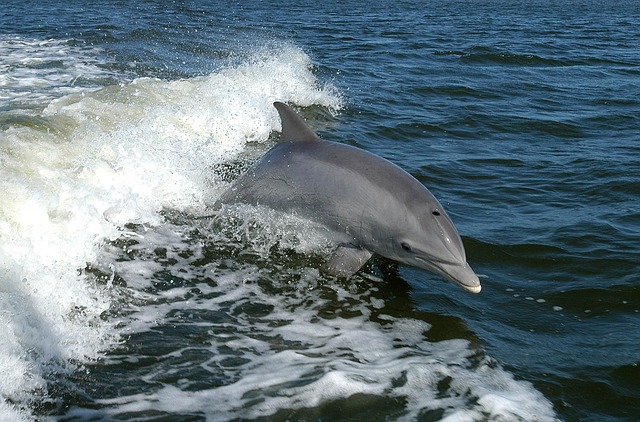
If you’re willing to venture to the coast, there’s also the chance of seeing some eye-catching aquatic wildlife. Head out on a boat with expert guides, and you may well spot Bottlenose Dolphins, Orcas or even various whale species. The Moray Firth, east of Inverness, is one of the best places to see dolphins in particular. Seeing these impressive creatures leaping out of the sea can be a memorable and rewarding experience that’s sure to last long in the memory.
Threats: Depletion of fish stocks, pollution, boat strikes and getting entangled in fishing gear.
Wildcat
UK Population: As few as 35 Status: Critically endangered Lifespan: Up to 12 years
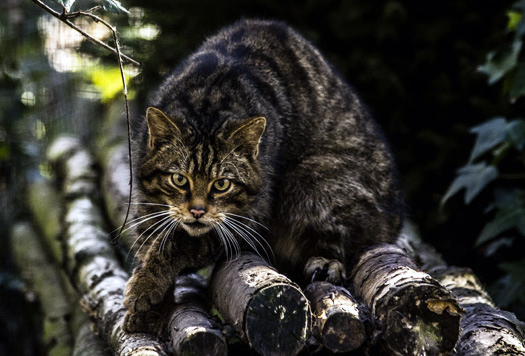
Found mostly in central and northern parts of Scotland, Scottish wildcats are now one of Britain’s rarest mammals due to multiple threats, with the biggest being interbreeding with domestic cats. The Scottish wildcat is currently listed by the International Union for the Conservation of Nature (IUCN) as critically endangered. Their dens are generally among large rocks or between roots, at the edges of mountains and moorlands. They are solitary and mostly nocturnal, and for the wildcats protection, previous sightings are kept purposefully vague.
Threats: Habitat loss, shooting and snaring despite their legal protection, and hybdridization with domestic cats.
See for yourself
This is just a small sample of the wildlife the Scottish Highlands has to offer. In such a rugged and natural area, you’re likely to see something new and exciting every time you venture out. Whether you want to seek out the assistance of knowledgeable guides or think you can go it alone, the choice is yours, and that’s the beauty of the Highlands. With a bit of research, plus a bit of luck, you may see some of Scotland’s most iconic creatures in their natural habitat.
